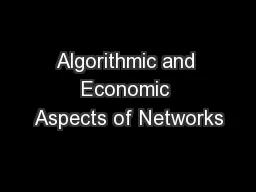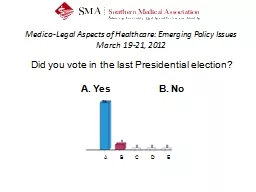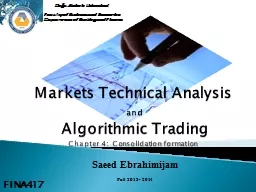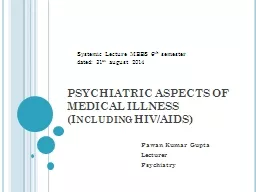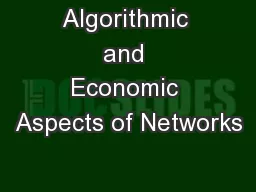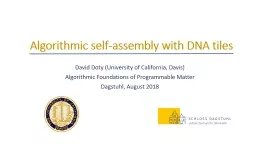PPT-Algorithmic and Economic Aspects of Networks
Author : tawny-fly | Published Date : 2016-06-04
Nicole Immorlica Learning in Networks Last lecture Actions chosen probabilistically Payoffs actiondependent and unknown Trick was to learn to play a highpayoff
Presentation Embed Code
Download Presentation
Download Presentation The PPT/PDF document "Algorithmic and Economic Aspects of Netw..." is the property of its rightful owner. Permission is granted to download and print the materials on this website for personal, non-commercial use only, and to display it on your personal computer provided you do not modify the materials and that you retain all copyright notices contained in the materials. By downloading content from our website, you accept the terms of this agreement.
Algorithmic and Economic Aspects of Networks: Transcript
Download Rules Of Document
"Algorithmic and Economic Aspects of Networks"The content belongs to its owner. You may download and print it for personal use, without modification, and keep all copyright notices. By downloading, you agree to these terms.
Related Documents

